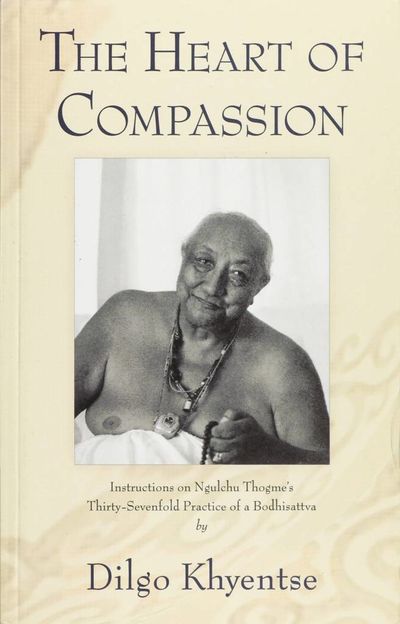No edit summary |
No edit summary |
||
| Line 19: | Line 19: | ||
*** {{i|Sixth, to rely on a spiritual teacher, whose presence creates conditions favorable to your progress|69}} | *** {{i|Sixth, to rely on a spiritual teacher, whose presence creates conditions favorable to your progress|69}} | ||
*** {{i|Seventh, to go for refuge, the entrance to the Buddhist teachings|72}} | *** {{i|Seventh, to go for refuge, the entrance to the Buddhist teachings|72}} | ||
PART | |||
First, the path for beings of lesser capacity 81 | ** {{i|PART TWO – THE MAIN TEACHINGS, ILLUMINATING THE PATH|81}} | ||
Second, the path for beings of medium capacity 85 | *** {{i|First, the path for beings of lesser capacity|81}} | ||
Third, the path for beings of superior capacity 90 | *** {{i|Second, the path for beings of medium capacity|85}} | ||
1. The bodhicitta of intention 90 | *** {{i|Third, the path for beings of superior capacity|90}} | ||
2. The bodhicitta of application 97 | **** {{i|1. The bodhicitta of intention|90}} | ||
I. Relative bodhicitta 97 | **** {{i|2. The bodhicitta of application|97}} | ||
A. The meditation practice of exchanging oneself and others 98 | ***** {{i|I. Relative bodhicitta|97}} | ||
B. The post-meditation practice of using unfavorable circumstances on the path 106 | ****** {{i|A. The meditation practice of exchanging oneself and others|98}} | ||
i. Using on the path the four things that you do not want to happen 106 | ****** {{i|B. The post-meditation practice of using unfavorable circumstances on the path|106}} | ||
a. How to use loss on the path 107 | ******* {{i|i. Using on the path the four things that you do not want to happen|106}} | ||
b. How to use suffering on the path 109 | ******** {{i|a. How to use loss on the path|107}} | ||
c. How to use disgrace on the path 111 | ******** {{i|b. How to use suffering on the path|109}} | ||
d. How to use disparagement on the path 112 | ******** {{i|c. How to use disgrace on the path|111}} | ||
******** {{i|d. How to use disparagement on the path|112}} | |||
ii. Using on the path the two things that are difficult to bear 115 | ii. Using on the path the two things that are difficult to bear 115 | ||
Revision as of 15:06, 20 February 2020
What would be the practical implications of caring more about others than about yourself? This is the radical theme of this extraordinary set of instructions, a training manual composed in the fourteenth century by the Buddhist hermit Ngulchu Thogme, here explained in detail by one of the great Tibetan Buddhist masters of the twentieth century, Dilgo Khyentse. In the Mahayana tradition, those who have the courage to undertake the profound change of attitude required to develop true compassion are called bodhisattvas. Their great resolve—to consider others’ needs as paramount, and thus to attain enlightenment for the sake of all living creatures—carries them beyond the limits imposed by the illusions of “I” and “mine,” culminating in the direct realization of reality, transcending dualistic notions of self and other. This classic text presents ways that we can work with our own hearts and minds, starting wherever we find ourselves now, to unravel our small-minded preoccupations and discover our own potential for compassion, love, and wisdom. Many generations of Buddhist practitioners have been inspired by these teachings, and the great masters of all traditions have written numerous commentaries. Dilgo Khyentse’s commentary is probably his most extensive recorded teaching on Mahayana practice. (Source: Shambhala Publications)
| Citation | Khyentse, Dilgo. The Heart of Compassion: Instructions on Ngulchu Thogme's Thirty-Sevenfold Practice of a Bodhisattva. Translated by Matthieu Ricard and edited by John Canti (Padmakara Translation Group). New Delhi: Shechen Publications, 2006. |
|---|---|


